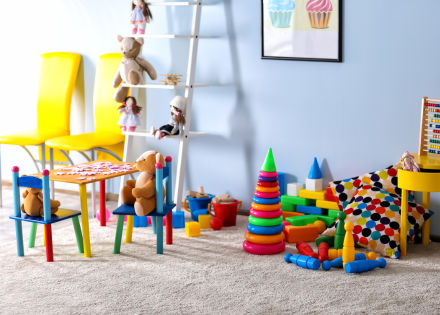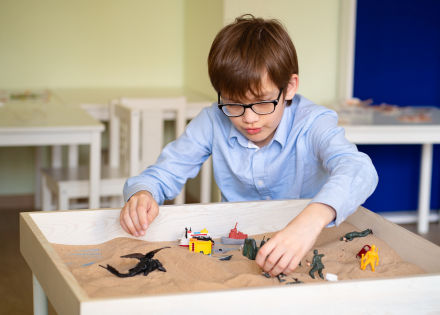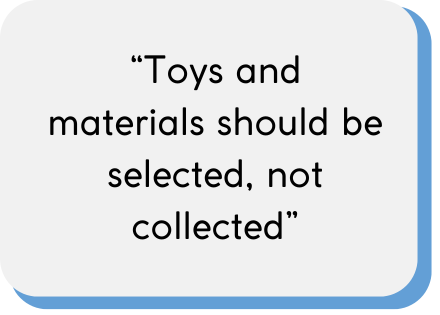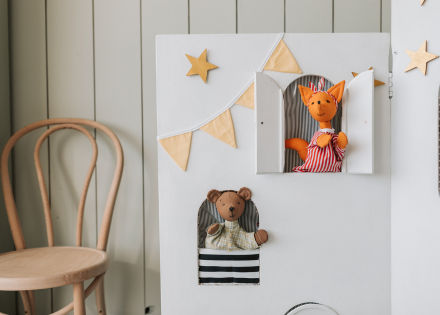In this article we consider toy categories, room layout and storage ideas as well as ideal toys for a playroom at home to support your child’s development.
Turn your home playroom into a therapeutic haven by incorporating calming elements, “zones” for different play types (pretend, creative), and open-ended toys for exploring emotions and practising skills.
A home playroom can be a space to play out daily life, including common day-to-day tasks, release emotions through physical play, get creative and solve problems with creative and fine motor toys and of course to interact with you.

What Should The Room Layout Include?
In an ideal scenario, the room should provide ample space for your child or children to move freely and explore. This flexibility allows them to choose between a comfy seating area for quiet reflection, a table and chairs for creative activities like art, drawing, or games that promote focus, and open floor space for energetic release.
Keep the layout simple and consider using storage containers that are not see-through, this keeps the area less busy for kids with sensory issues.
You may wish to organise the room by toy or activity category for example, an area for:
- dress-ups with a mirror
- A car mat with cars stored in a cupboard or box close by
- A creative area for arts and crafts and so on…
Keeping toys stored consistently in the same place is helpful, to ensure your child knows where to go to find a toy they are looking for.
Consider each activity or toy and how much space each needs. For example:
- A sandbox or kinetic sandbox may be better in the middle or the room, or where kids can move around the sandbox without restriction
- A puppet show stand may be better close to a wall so that the child has a place to hide [1]

Criteria For Choosing Toys
When choosing toys for a playroom, here are a couple of points to consider:
- Less is more, a few good quality durable toys is better than many
- Consider second hand if in a suitable condition
- Avoid clutter, so have systems to keep the room organised (fewer toys helps with this)
- Opt for a mix of open-ended toys that allows for on-going play, or play that your child can come back to, rather than just closed play (such as board games or books)
- Toys that increase opportunities to play and communicate with others (such as puppets and stacking towers)
Questions to ask when selecting toys:
- How many toys do I already have in this category?
- Can the toy be used without instructions?
- Can the toy be used without it breaking easily? If so, it may be a more suitable choice.
- Can the toys/equipment be used in multiple ways?

“Toys and materials should be selected, not collected.” [2]
Ideal Toys & Categories
Toys can be categorised by their type or purpose, for example you may wish to group toys by creative, art, physical toys and so on. Below are some suggestions on categories, noting that some toys may be cross-categories.
Garry Landreth [2] talks about 3 categories of toys:
- Real life toys
- Aggression toys (and toys that can give the kids feeling of power)
- Creative expression (art supplies, paint, sand)
Some toys go cross-category, for example a bot bag (a blow up punch bag with a character printed on it) – some kids will hit it and punch it, others may hug it or dress it up.
Toys can be used across different categories, but here are some ways of looking at different groupings of toys and their different uses.
Real Life Toys
Real life toys allow children to play out things that are going on in their lives. For example toys that represent a family, food items to represent going to the shops, preparing meals and enjoying a meal. Playing with real life toys allows children to communicate their feelings and experiences.
Examples of ideal toys for a play room include:
- Play kitchens and pretend food
- Dolls and action figures
- Animals, cars, trucks, trains
- Cash register and toy money
An animal family could be an option rather than dolls, as there are less rules to follow, for example hair colour, clothing and so on.
Aggression Toys
Aggression toys may also be categorised as gross motor & physical toys and refer to toys that can be used to release emotions and energy.
Ideal therapy room toys might include:
- Large toy cars
- Rope to pull
- Stool to jump off
- Tricycles
- Push and Pull Toys
- Balls to throw
For example, if a child has lots of energy, they can use a soft ball and throw it against a wall.
Creative Expression
Expressive art can be used as a way to release aggression or express other feelings. Examples include:
- Playdough
- Kinetic Sand
- Water play
- Colouring in & drawing
- Crafting (glue, scissors, paper, crayons, texters)
- Painting
- Dressing up
- Puppets

Two additional toy categories may be applicable to younger children for your playroom. These are language and fine motor toys.
Language & Directive Play
This may include:
- Card Games
- Board games
- Toy Letters
- Books
Fine Motor Toys
- Stacking blocks
- Shapes
- Puzzles
The Importance Of Play With A Caregiver
Playing with a variety of different toys and games with your child will help to model behaviour as well as how to deal and manage different ‘pretend’ scenarios. Your child will look to you to see how you handle problems, conflicts and day to day activities through play.
Summary
The ideal toys for your playroom depend on your specific goals. Organise by category (dolls, art supplies, building sets) to create diverse play experiences. Consider your layout and how different toys can create dedicated spaces for various activities. Opt for a few high-quality items over a large quantity of low-quality ones.
Ensure easy organisation with clear storage and labels to allow your kids and caregivers to find what they need.
Sources:
- Organizing Your Play Room Podcast
- Selecting Toys and Tools Podcast
- The Most Important Toy in the Playroom: Why It’s You and How This Knowledge Can Transform Your Practice (pdf)
